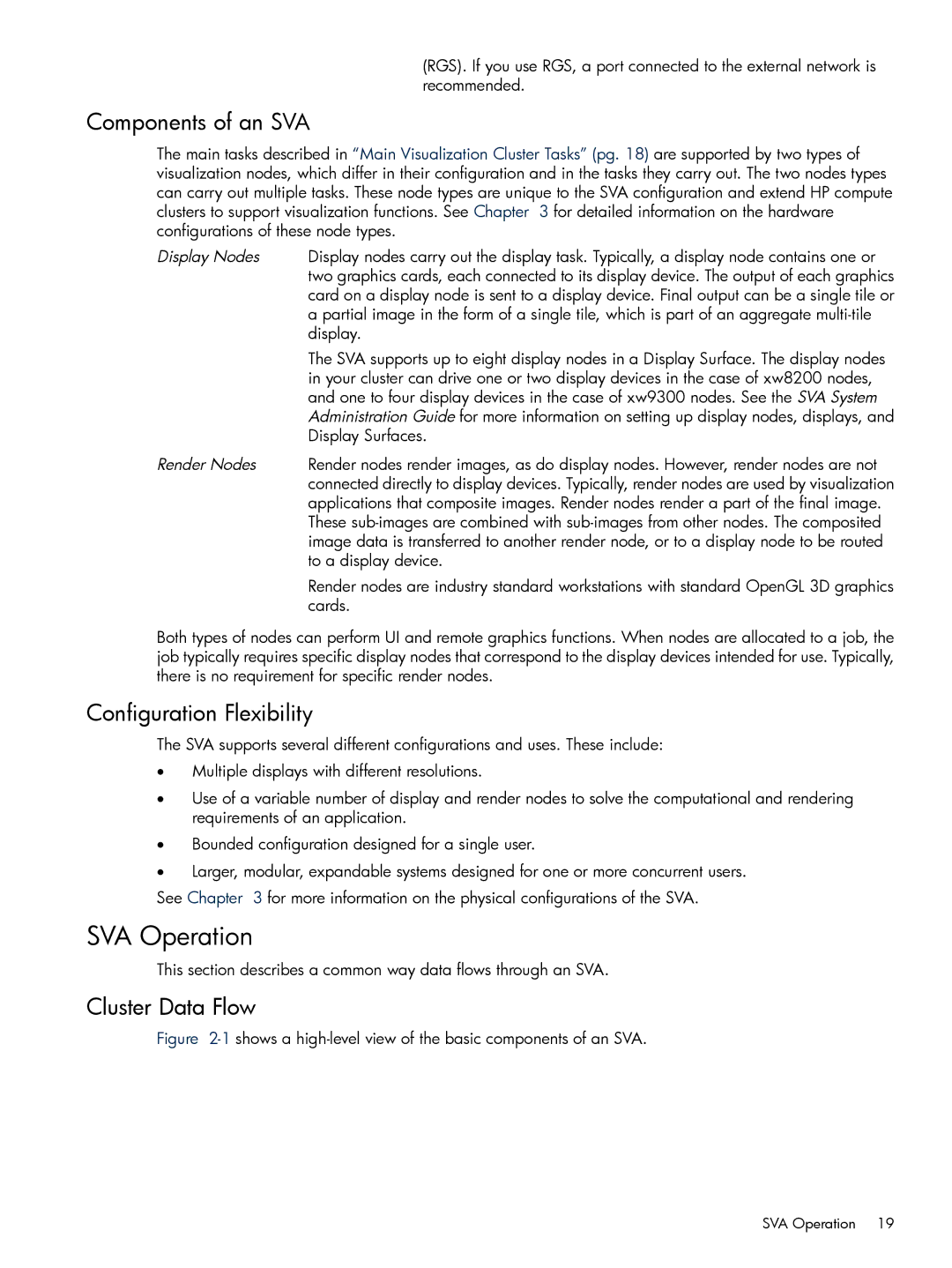(RGS). If you use RGS, a port connected to the external network is recommended.
Components of an SVA
The main tasks described in “Main Visualization Cluster Tasks” (pg. 18) are supported by two types of visualization nodes, which differ in their configuration and in the tasks they carry out. The two nodes types can carry out multiple tasks. These node types are unique to the SVA configuration and extend HP compute clusters to support visualization functions. See Chapter 3 for detailed information on the hardware configurations of these node types.
Display Nodes Display nodes carry out the display task. Typically, a display node contains one or two graphics cards, each connected to its display device. The output of each graphics card on a display node is sent to a display device. Final output can be a single tile or a partial image in the form of a single tile, which is part of an aggregate
The SVA supports up to eight display nodes in a Display Surface. The display nodes in your cluster can drive one or two display devices in the case of xw8200 nodes, and one to four display devices in the case of xw9300 nodes. See the SVA System Administration Guide for more information on setting up display nodes, displays, and Display Surfaces.
Render Nodes Render nodes render images, as do display nodes. However, render nodes are not connected directly to display devices. Typically, render nodes are used by visualization applications that composite images. Render nodes render a part of the final image. These
Render nodes are industry standard workstations with standard OpenGL 3D graphics cards.
Both types of nodes can perform UI and remote graphics functions. When nodes are allocated to a job, the job typically requires specific display nodes that correspond to the display devices intended for use. Typically, there is no requirement for specific render nodes.
Configuration Flexibility
The SVA supports several different configurations and uses. These include:
•Multiple displays with different resolutions.
•Use of a variable number of display and render nodes to solve the computational and rendering requirements of an application.
•Bounded configuration designed for a single user.
•Larger, modular, expandable systems designed for one or more concurrent users.
See Chapter 3 for more information on the physical configurations of the SVA.
SVA Operation
This section describes a common way data flows through an SVA.
Cluster Data Flow
Figure 2-1 shows a high-level view of the basic components of an SVA.
SVA Operation 19
